The Lichtenstein’s hartebeest, scientifically known as Alcelaphus lichtensteinii, is a species of antelope found in the miombo woodlands of eastern and southern Africa. It is native to countries such as Malawi, South Africa, Tanzania, Zambia, and parts of Zimbabwe.
The Lichtenstein’s hartebeest is a relatively large antelope, standing at around four feet tall at the shoulder and weighing approximately 480 pounds. The males possess horns that can vary in length from 18 to 28 inches. These horns serve both as a defense against predators and as a means for males to compete with each other during the breeding season. In the wild, Lichtenstein’s hartebeest can live for 11 to 20 years.
These hartebeests primarily inhabit the grasses of floodplains and savannas. They are diurnal animals, meaning they are active during the day. They usually form herds consisting of five to fifteen females, calves, and a dominant male leader. The male hartebeest takes on the role of standing guard from elevated positions such as termite mounds. They prefer to graze during the early morning and late afternoon, seeking shade during the hotter parts of the day. Both males and females have distinctive curved horns that, when viewed from the side, resemble the letter “S.” When viewed from the front, the horns create the letter “O” with a section missing at the top. Lichtenstein’s hartebeest have a keen sense of smell and excellent hearing, although their eyesight is relatively poor.
Lichtenstein’s hartebeest thrive in the floodplains and tropical savannas, which provide them with an ideal habitat. Due to their abundant population, hunting opportunities for exceptional bulls are readily available in these areas.
Lichtenstein’s Hartebeest: Species Profile
COMMON NAME: Lichtenstein’s Hartebeest
SWAHILI NAME: Kongoni wa Lichtenstein / Konzi
SCIENTIFIC NAME: Alcelaphus lichtensteinii
TYPE: Mammal
FOOD: Lichtenstein’s Hartebeests are herbivores and primarily feed on grasses. They have a specialized digestive system that allows them to extract nutrients from tough, fibrous vegetation. They also browse on leaves, shoots, and herbs when available.
HABITAT: Lichtenstein’s Hartebeests inhabit open grasslands, savannas, and woodlands in parts of East and Southern Africa. They can be found in countries such as Tanzania, Kenya, Zambia, and Malawi. They prefer areas with a mix of grassy plains and scattered trees or shrubs.
SIZE: Lichtenstein’s Hartebeests are large antelopes with a shoulder height of approximately 120-140 centimeters (47-55 inches). Adult males, known as bulls, are larger and heavier than females, known as cows. Bulls can weigh around 150-200 kilograms (330-440 pounds), while cows weigh around 120-180 kilograms (265-400 pounds).
AVERAGE LIFE SPAN IN THE NATURAL HABITAT: In the wild, Lichtenstein’s Hartebeests have an average lifespan of around 15 years. However, some individuals may live longer under favorable conditions.
ACTIVE: Lichtenstein’s Hartebeests are diurnal animals, meaning they are primarily active during the day. They are well adapted to open grasslands and are known for their fast running ability. They form small groups or herds and engage in social interactions within their population.
GESTATION PERIOD: The gestation period of Lichtenstein’s Hartebeests lasts approximately 8-9 months. After this period, a single calf is born. The newborn calves are able to stand and follow their mothers shortly after birth.
WEIGHT: The weight of Lichtenstein’s Hartebeests varies depending on their sex. Adult males, or bulls, typically weigh between 150-200 kilograms (330-440 pounds), while adult females, or cows, usually weigh around 120-180 kilograms (265-400 pounds).
SIZE COMPARISON TO A 6-FT MAN: Lichtenstein’s Hartebeests are taller and larger than a 6-ft man. With a shoulder height of approximately 120-140 centimeters (47-55 inches), they stand significantly taller than an average human. Their long, slender legs and unique, elongated face make them easily distinguishable among other antelope species.
Striking Physical Characteristics:
Lichtenstein’s Hartebeest, scientifically known as Alcelaphus lichtensteinii, is a large antelope species found in certain regions of Africa. Here is a description of its appearance:
- Size: Lichtenstein’s Hartebeest is a relatively large antelope species, with males being larger than females. Males typically measure around 150 to 200 centimeters (59 to 79 inches) in length from head to body, with an additional tail length of about 30 to 45 centimeters (12 to 18 inches). They stand at shoulder heights of approximately 130 to 150 centimeters (51 to 59 inches). Females are slightly smaller, but still substantial in size.
- Body Structure: These hartebeests have a robust and muscular build, with a distinctive shoulder hump and elongated head. Their body is covered in short, coarse hair, which is typically reddish-brown to grayish-brown in color. The coat is often lighter on the underbelly, and some individuals may have a lighter patch on the throat.
- Facial Features: Lichtenstein’s Hartebeest has a unique facial appearance characterized by a long and narrow face. The elongated head is crowned with a pair of long, slender horns that curve backward and slightly upward. The horns can grow up to 60 to 70 centimeters (24 to 28 inches) in length, with a distinct ridge along the upper surface.
- Legs and Hooves: The hartebeest’s legs are slender and have a distinct coloration, with black and white markings above the hooves. The hooves themselves are sharp and pointed, allowing for agility and effective movement across various terrains.
- Sexual Dimorphism: Males and females of Lichtenstein’s Hartebeest exhibit sexual dimorphism, with males being larger and having more pronounced horns than females. Females generally lack horns or have shorter and thinner ones.
A. Graceful Form:
Lichtenstein’s hartebeest possesses a slender and graceful body structure. Its long, slender legs and arched back contribute to its elegant appearance, allowing it to navigate the open grasslands with agility and speed. The antelope’s body is covered in a short, coarse coat, which varies in color from reddish-brown to a rich chestnut hue.
B. Distinctive Facial Features:
One of the most distinguishing features of Lichtenstein’s hartebeest is its unique facial appearance. It is characterized by a long, narrow face and a pair of gently curved horns that adorn both males and females. The horns, which can reach impressive lengths, add to the antelope’s allure and serve as important defensive weapons.
Habitat and Range:
A. Grassland and Savanna Environments:
Lichtenstein’s hartebeest thrives in open grasslands and savannas, which provide an abundance of nutritious grasses and suitable cover. They can be found in various countries across Sub-Saharan Africa, including Tanzania, Zambia, Angola, and Botswana. These expansive habitats offer the antelopes ample space to roam and access to resources.
B. Habitat Preferences:
Within their range, Lichtenstein’s hartebeest exhibits habitat preferences that include areas with a mixture of tall grasses, shrubs, and scattered trees. They are often found near water sources such as rivers and seasonal streams, as access to water is vital for their survival.
Behaviour and Feeding Habits:
Lichtenstein’s Hartebeest, scientifically known as Alcelaphus lichtensteinii, exhibits interesting behavioral characteristics. Here are some notable aspects of their behavior:
- Social Structure: Lichtenstein’s Hartebeest is primarily a gregarious species, forming herds that can range in size from a few individuals to larger groups of up to 20 or more. These herds usually consist of females, their offspring, and a dominant male. However, bachelor herds of males can also form, especially during the non-breeding season.
- Territorial Behavior: The dominant male in the herd establishes and defends a territory that encompasses the core grazing areas. He marks his territory through various means, including scent marking with preorbital glands and dung piles. The male defends the territory against rival males, using his impressive horns and engaging in lateral displays to intimidate intruders.
- Grazing Behavior: Lichtenstein’s Hartebeest is predominantly a grazer, feeding on a variety of grasses and herbs. They are well-adapted to open grassland habitats and have specialized dentition for efficiently processing tough grasses. These antelopes have a high dependence on water sources and are often found near permanent waterholes or rivers.
- Communication: Communication among Lichtenstein’s Hartebeest is primarily through vocalizations and visual displays. They produce various vocalizations, including snorts, grunts, and wheezing calls, which serve as warning signals to alert the herd of potential threats. Visual displays involve erecting the hair on the back and neck, raising the head, and performing stiff-legged jumps.
- Mating Behavior: Breeding typically occurs during specific periods, with dominant males actively seeking out receptive females within their territory. During courtship, males engage in displays that involve posturing, running, and vocalizations to attract females. Once a female is receptive, mating takes place, and the gestation period lasts around 8 to 9 months.
- Vigilance and Anti-Predator Strategies: Lichtenstein’s Hartebeest is constantly vigilant and employs various anti-predator strategies. They rely on their keen eyesight and excellent sense of hearing to detect potential threats. When alerted, the herd may adopt an alarm posture, with individuals standing erect and facing the perceived danger, ready to flee if necessary.
Overall, Lichtenstein’s Hartebeest is a visually striking antelope species with its elongated head, unique facial features, and distinctively colored coat. Its robust body structure and impressive horns make it an intriguing and iconic species to observe in the wild.
A. Grass-Eating Specialists:
Lichtenstein’s hartebeest is predominantly a grazer, relying on a diet consisting mainly of grasses and herbaceous vegetation. Their elongated face and specialized dentition enable them to efficiently consume and digest tough grasses, extracting vital nutrients from their fibrous diet.
B. Water Requirements:
While Lichtenstein’s hartebeest can derive some moisture from the vegetation they consume, they still have a dependence on water sources. They will seek out water to drink, particularly during dry seasons or periods of drought, ensuring their hydration needs are met.
Social Behavior:
A. Group Dynamics:
Lichtenstein’s hartebeest exhibits a social structure centered around small herds or groups. These herds usually consist of adult females, their offspring, and a dominant male. The antelopes within a herd maintain visual contact and communicate through a combination of visual cues, vocalizations, and scent marking.
B. Breeding and Courtship:
During the breeding season, male hartebeests engage in competitive displays to establish dominance and secure mating opportunities. They engage in sparring matches, clashing their horns to assert their strength and prowess. The successful male gains the privilege to mate with receptive females, ensuring the continuation of their genetic lineage.
Conservation Status:
Lichtenstein’s hartebeest faces various conservation challenges throughout its range. Habitat loss due to human activities, including agricultural expansion and infrastructure development, poses a significant threat. Additionally, illegal hunting and poaching for meat and trophies contribute to the decline of this majestic antelope. Efforts are underway to protect and conserve Lichtenstein’s hartebeest through the establishment of protected areas, community-based conservation initiatives, and raising awareness about their ecological importance.
Hunting Lichtenstein’s hartebeest
Hunting Lichtenstein’s hartebeest in Africa is a popular activity, mainly because of the high-quality meat they provide and their visually appealing hides. The animals are easily visible due to their distinctive coloration. The Lichtenstein’s hartebeest population is considered stable, and it is currently listed as “Least Concern” by the International Union for Conservation of Nature (IUCN).
When hunting Lichtenstein’s hartebeest in Africa, patience is essential. These inquisitive antelopes have a tendency to stop and mill around with the herd even after being spooked, giving the hunter an opportunity to make the shot. Hunting from high ground and using binoculars for glassing is recommended. The hartebeest herds are most active during dawn and dusk, so those are the ideal times for hunting. Although they can be spotted relatively easily on open ground, a good pair of binoculars will enhance the hunting experience.
Hunting Lichtenstein’s hartebeest in Africa provides hunters with a rewarding experience, delicious meat, and a unique hide. It is an opportunity to appreciate the beauty of these magnificent animals while engaging in a challenging and thrilling pursuit.
If you are planning to hunt Lichtenstein’s hartebeest in Africa, you will need to choose one of these countries as your hunting destination.
Alcelaphus lichtensteinii
Alcelaphus lichtensteinii (Lichtenstein’s hartebeest) stands as a symbol of the African grasslands, with its graceful form, unique features, and captivating behaviors. As we continue to appreciate and understand the ecological role of this antelope species, it is imperative that we work together to safeguard its future. By supporting conservation efforts, promoting sustainable land use practices, and raising awareness about the importance of biodiversity, we can contribute to the preservation of Lichtenstein’s hartebeest for generations to come.
Lichtenstein’s Hartebeest Adaptations
Lichtenstein’s Hartebeest, scientifically known as Alcelaphus lichtensteinii, has evolved several remarkable adaptations that allow it to thrive in its natural habitat. Here are some notable adaptations of this species:
1. Body Structure and Speed
Lichtenstein’s Hartebeest has a unique body structure that contributes to its impressive speed and agility. They have elongated limbs and a lightweight build, allowing them to move swiftly across the grasslands. Their long legs provide an extended stride, enabling them to cover large distances while grazing or escaping from predators.
2. Excellent Vision and Hearing
These hartebeests possess excellent vision, with eyes positioned high on their heads, providing a wide field of view. This adaptation allows them to detect potential threats or predators from a distance. Additionally, they have well-developed ears, which are sensitive to even subtle sounds, helping them to detect approaching danger.
3. Adapted Dentition
Lichtenstein’s Hartebeest has specialized dentition adapted for their grass-based diet. They have large incisors and pre-molars, which are well-suited for cropping and grinding tough grasses. This enables them to efficiently extract nutrients from their primary food source, making the most of the available vegetation in their habitat.
4. Water Dependency
One notable adaptation of Lichtenstein’s Hartebeest is their reliance on water sources. They inhabit areas near permanent waterholes, rivers, or seasonal water sources. This adaptation allows them to fulfill their hydration needs in the often arid grassland habitats they inhabit. They have also developed the ability to detect water sources from a considerable distance.
5. Heat Regulation
Living in the African grasslands, Lichtenstein’s Hartebeest has adapted mechanisms to cope with the heat. They have a high density of blood vessels in their skin, which helps with heat dissipation through vasodilation. Additionally, they possess sweat glands that allow them to cool down through evaporative cooling, especially during periods of intense heat.
6. Camouflage and Warning Signals
The coloration of Lichtenstein’s Hartebeest’s coat provides effective camouflage in their grassland habitat. Their reddish-brown to grayish-brown fur blends well with the surrounding vegetation, offering them some protection against predators. Additionally, they have developed visual displays, such as erecting the hair on their back and neck, as warning signals to alert others in the herd of potential danger.
These adaptations of Lichtenstein’s Hartebeest have played a crucial role in their survival and success in the grasslands of their native habitat.
Where to See Lichtenstein’s Hartebeests in Tanzania
Lichtenstein’s Hartebeest (Alcelaphus lichtensteinii) can be found in certain regions of Tanzania, offering wildlife enthusiasts the opportunity to observe these fascinating antelopes in their natural habitat. Here are some recommended locations where you can spot Lichtenstein’s Hartebeests in Tanzania:
1. Serengeti National Park:
The Serengeti, renowned for its incredible wildlife, is a prime destination for viewing Lichtenstein’s Hartebeests. These antelopes can be seen grazing on the open plains alongside other herbivores, such as wildebeests and zebras. The Serengeti provides vast grassland areas that are favored by Lichtenstein’s Hartebeests.
2. Ngorongoro Conservation Area:
As a UNESCO World Heritage Site, the Ngorongoro Conservation Area offers breathtaking landscapes and rich biodiversity. Lichtenstein’s Hartebeests can be found in the open grassy areas within the crater and the surrounding plains. Exploring this region provides an excellent opportunity to encounter these antelopes along with other wildlife species.
3. Tarangire National Park:
Known for its diverse wildlife, Tarangire National Park is another recommended location for observing Lichtenstein’s Hartebeests. This park is characterized by its riverine forests, expansive grasslands, and iconic baobab trees. Lichtenstein’s Hartebeests can often be seen grazing in the open areas, particularly close to water sources during the dry season.
4. Ruaha National Park:
Located in southern Tanzania, Ruaha National Park is a hidden gem that offers a more remote and off-the-beaten-path wildlife experience. Here, you can encounter Lichtenstein’s Hartebeests roaming the savannah and woodland areas. The park’s rugged landscapes and diverse ecosystems provide an ideal habitat for these antelopes.
5. Selous Game Reserve:
As one of the largest game reserves in Africa, the Selous offers vast wilderness and remarkable wildlife encounters. Lichtenstein’s Hartebeests can be spotted in the open grasslands and woodland areas of the reserve. Exploring the Selous allows for a unique safari experience with the chance to observe these antelopes in a less crowded setting.
When planning your wildlife safari in Tanzania, it is advisable to consult with experienced tour operators or local guides who can help tailor your itinerary to include specific locations where Lichtenstein’s Hartebeests are commonly sighted.
Lichtenstein’s Hartebeest Safari Tips
If you’re planning a safari to observe Lichtenstein’s Hartebeest (Alcelaphus lichtensteinii) in their natural habitat, here are some useful tips to enhance your experience:
1. Choose the Right Time of Year: Lichtenstein’s Hartebeests can be spotted throughout the year, but the dry season, typically from June to October, is considered the best time for wildlife viewing in Tanzania. During this period, the vegetation is less dense, making it easier to spot these antelopes in the grasslands.
2. Seek Expert Guidance: Engage the services of experienced safari guides or tour operators who have in-depth knowledge about the regions where Lichtenstein’s Hartebeests are commonly found. Their expertise will significantly enhance your chances of encountering these magnificent antelopes and provide valuable insights into their behavior and habitat.
3. Opt for Game Drives: Game drives are the most common and effective way to explore the national parks and reserves where Lichtenstein’s Hartebeests reside. Joining a guided game drive allows you to cover larger areas and increases your chances of sighting these antelopes. The open-sided vehicles provide excellent visibility and allow you to navigate through different habitats.
4. Be Patient and Observant: Wildlife encounters require patience and keen observation. Lichtenstein’s Hartebeests blend well with their surroundings, so keep a watchful eye on the grasslands and open plains. Look for any movement or distinctive silhouettes that may indicate the presence of these antelopes.
5. Visit Watering Holes: Lichtenstein’s Hartebeests rely on water sources, so positioning yourself near watering holes or rivers can offer rewarding sightings. As they come to drink, you may have the opportunity to observe their behavior and interactions with other wildlife.
6. Take Advantage of Early Mornings and Late Afternoons: Wildlife is most active during the cooler parts of the day, especially early mornings and late afternoons. Plan your safaris during these times to maximize your chances of encountering Lichtenstein’s Hartebeests and witnessing their natural behaviors, such as grazing or socializing.
7. Bring Appropriate Gear: When going on a safari, pack essential items such as binoculars, a camera with a telephoto lens, sunscreen, a hat, comfortable clothing, and sturdy footwear. Binoculars will allow you to observe the antelopes from a distance, while a camera will help you capture incredible wildlife moments.
8. Respect Wildlife and their Habitat: During your safari, it’s essential to respect the wildlife and their environment. Maintain a safe distance from the animals, refrain from making loud noises, and follow the guidance of your guide to ensure the well-being of both the wildlife and yourself.
By following these safari tips, you’ll increase your chances of having memorable encounters with Lichtenstein’s Hartebeests and gain a deeper appreciation for these remarkable antelopes.
Lichtenstein’s Hartebeest Frequently Asked Questions
Here are some frequently asked questions about Lichtenstein’s Hartebeest (Alcelaphus lichtensteinii):
Q: What is the physical appearance of Lichtenstein’s Hartebeest?
A: Lichtenstein’s Hartebeest is a large antelope species with a unique appearance. They have a reddish-brown to chestnut-brown coat, a distinct white patch on their rump, and a dark stripe running along their sides. These antelopes have long, slender legs, a sloping back, and curved horns in both males and females.
Q: Where are Lichtenstein’s Hartebeests found?
A: Lichtenstein’s Hartebeests are primarily found in East Africa, including Tanzania, Kenya, Uganda, and Ethiopia. They inhabit various habitats such as open grasslands, savannahs, and woodland areas, often preferring areas with ample grazing opportunities.
Q: What is the typical behavior of Lichtenstein’s Hartebeest?
A: Lichtenstein’s Hartebeests are social animals that form small herds consisting of females, their offspring, and sometimes a dominant male. They are grazers, feeding on grasses and herbs, and are known for their endurance, capable of running for long distances. When alarmed, they emit a loud snorting sound and may engage in a stiff-legged, high-jumping behavior called “stotting.”
Q: Do Lichtenstein’s Hartebeests migrate?
A: Yes, Lichtenstein’s Hartebeests are known to undertake seasonal migrations in search of water and fresh grazing. They may move between different habitats or follow rainfall patterns to ensure a stable food supply.
Q: What are the main threats to Lichtenstein’s Hartebeest population?
A: Lichtenstein’s Hartebeests face several threats to their population, including habitat loss due to agricultural expansion, competition with livestock for grazing areas, and illegal hunting for their meat and horns. Conservation efforts are crucial to safeguard their populations and preserve their natural habitats.
Q: Are Lichtenstein’s Hartebeests endangered?
A: Lichtenstein’s Hartebeests are currently listed as a species of “Least Concern” on the IUCN Red List of Threatened Species. However, localized declines in their populations have been observed in certain regions due to human activities and habitat degradation.
Q: Can Lichtenstein’s Hartebeest interbreed with other antelope species?
A: Lichtenstein’s Hartebeest can interbreed with other closely related hartebeest species, such as the Coke’s Hartebeest. The resulting offspring are known as hybrids and may display traits from both parent species.
Observing Lichtenstein’s Hartebeests in the wild provides a unique opportunity to witness their fascinating behavior and appreciate their importance in East Africa’s ecosystems.

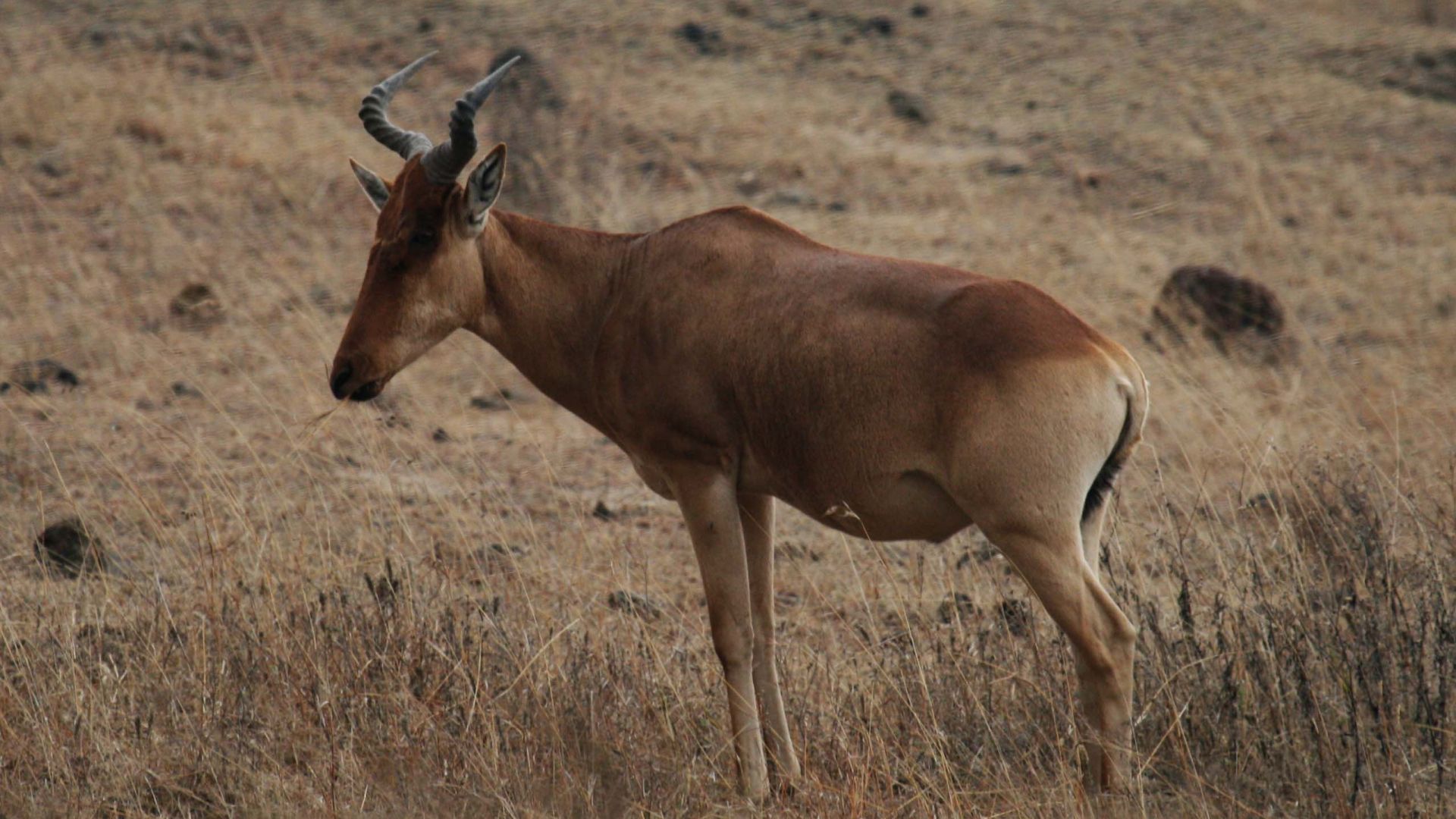
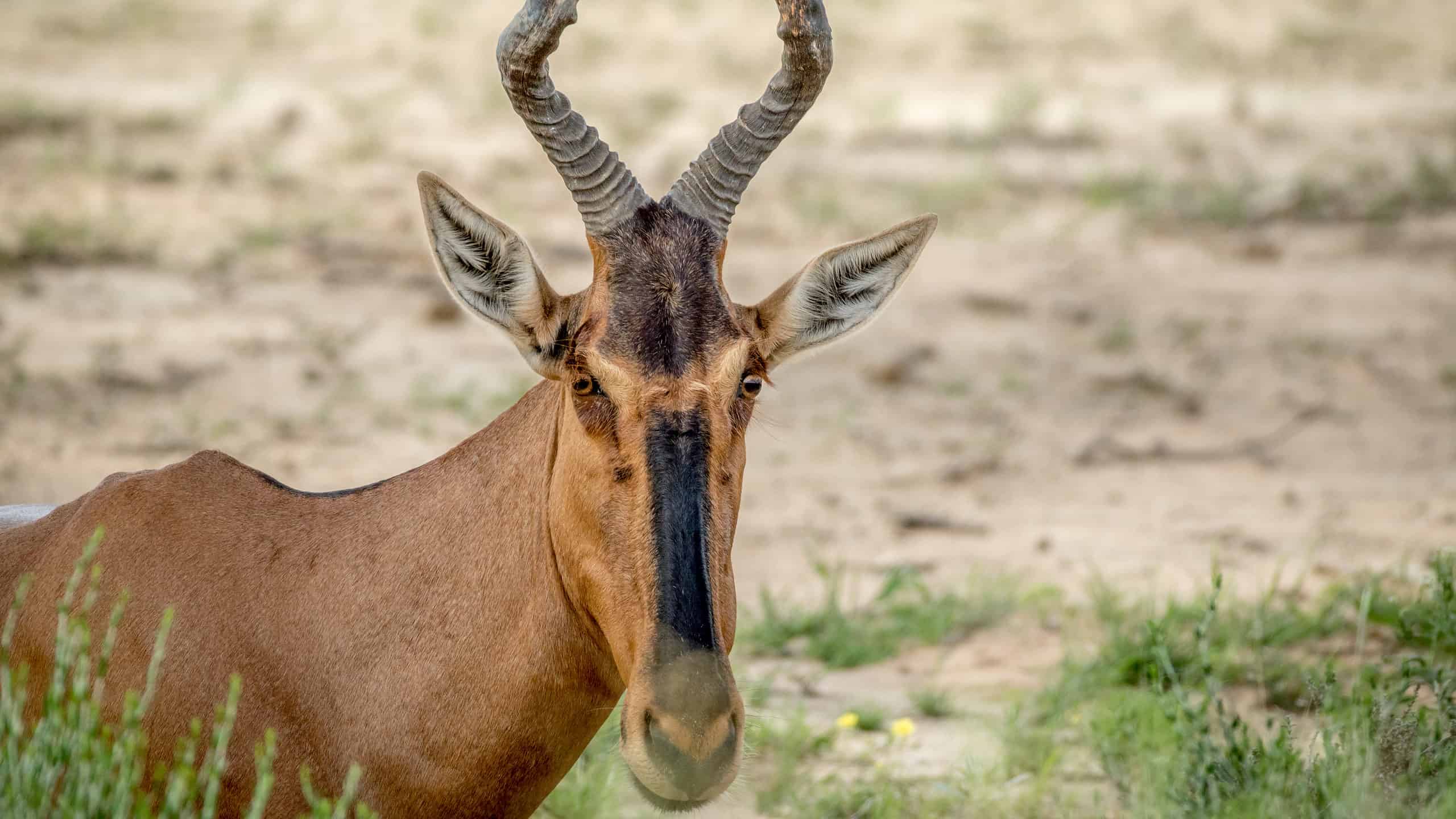
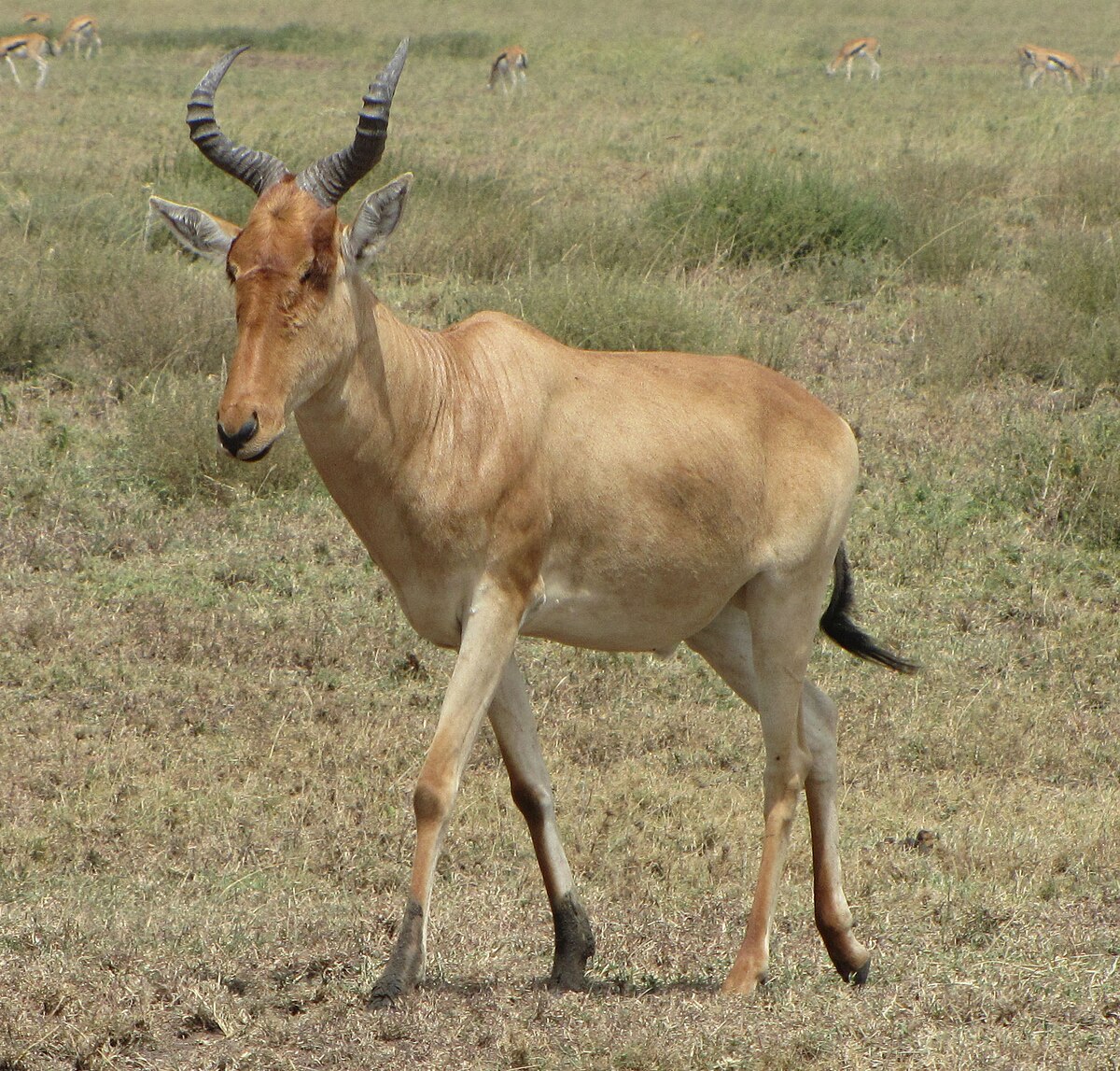
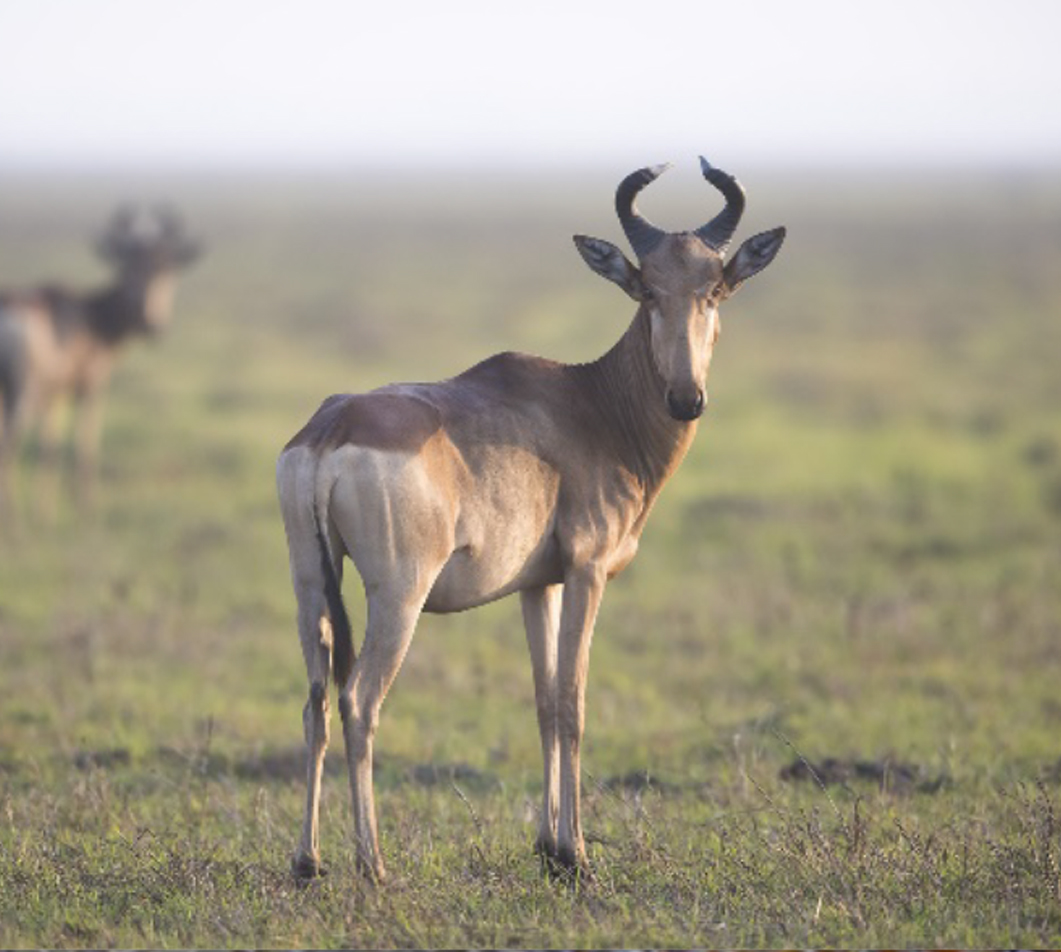
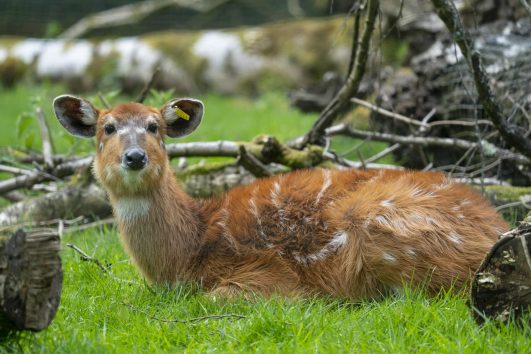

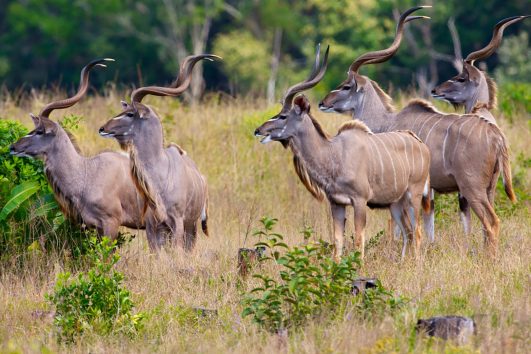
Tour Reviews
There are no reviews yet.
Leave a Review